
3 minute read
Spectacular plants for dramatic autumn colour
By Sparrow Morgan-Grenville (Sparrow, 1980)
Sparrow Morgan-Grenville is an award-winning garden designer with a portfolio ranging from cottage gardens to manor houses, parks and estates, to private London gardens and luxury developments. She shares her tips for creating a display of autumn colour in your garden.

Once the fresh greens of spring lead into summer,
there is a perverse part of many of us that looks forward to the chill of autumn and long walks in the woods with the spectacular fiery hues of autumn leaves against clear cobalt skies.
Many deciduous trees, shrubs and climbers finish the year in a blaze of fiery glory, but there are also colours from berries, fruit and hips as well as plenty of flowers to keep the garden interesting right into winter. Positioning is key for making the most of bright autumn tinted leaves – ideally they should be backlit by the sun for maximum effect.
My top suggestions for autumn interest and colour:
Amelanchier lamarckii is a stunning small tree that earns its place in any garden, with starry, white blossom as the coppery young leaves appear in spring. In midsummer it is covered in deep red berries (loved by birds and edible to humans) which is followed by dramatic scarlet, crimson and purple leaf colour in the autumn.
Callicarpa bodinieri var. giraldii ‘Profusion’ is also known as the Beauty Berry with good reason – stunning clusters of purple berries in mid-autumn overlap with the golden purple leaf colour and they stay on after the leaves drop. A bit of a one hit wonder – but what a hit!
Cercis canadensis ‘Forest Pansy’ has unusual deep red, pink or white flowers on bare branches before the leaves appear. Once autumn arrives these deep purple heart-shaped leaves turn glorious shades of yellow.
Crab apples with their colourful fruit and foliage look fabulous for much of the year. Malus ‘Evereste’ is a perfect, small conical shaped tree with pink buds opening to white flowers in spring and orangey red fruit that last well into the winter, long after the coloured autumn leaves fall.

Above: Malus ‘Evereste’, Crab apples.
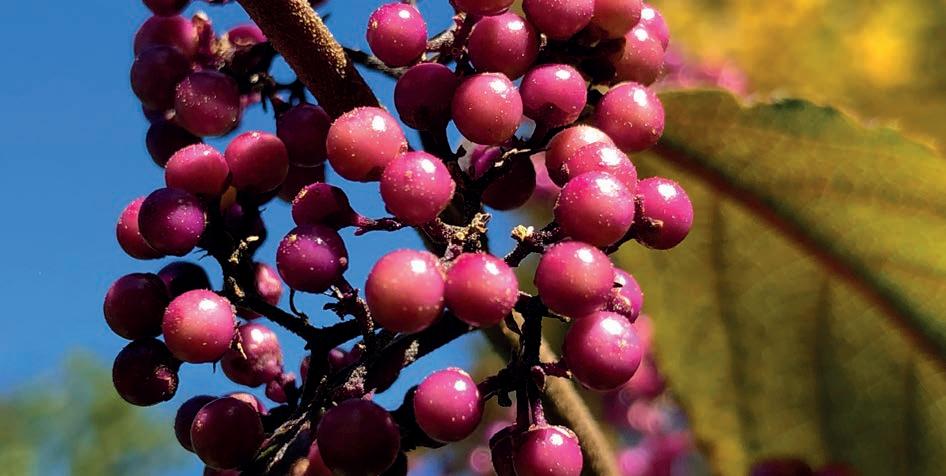
Callicarpa bodinieri var. giraldii ‘Profusion’, or Beauty Berry.
Parthenocissus quinquefolia (or the more restrained P. henryana with pretty white markings on the leaves) will blaze shades of fiery crimson across the north facing side of a house in autumn.
Ornamental grasses catch the late summer light and shiver in the breeze, adding movement to the garden in autumn, particularly planted with perennials such as the arching stems of Dierama, the gawky shaped but nevertheless elegant Verbena bonariensis or the late-flowering Agastache.
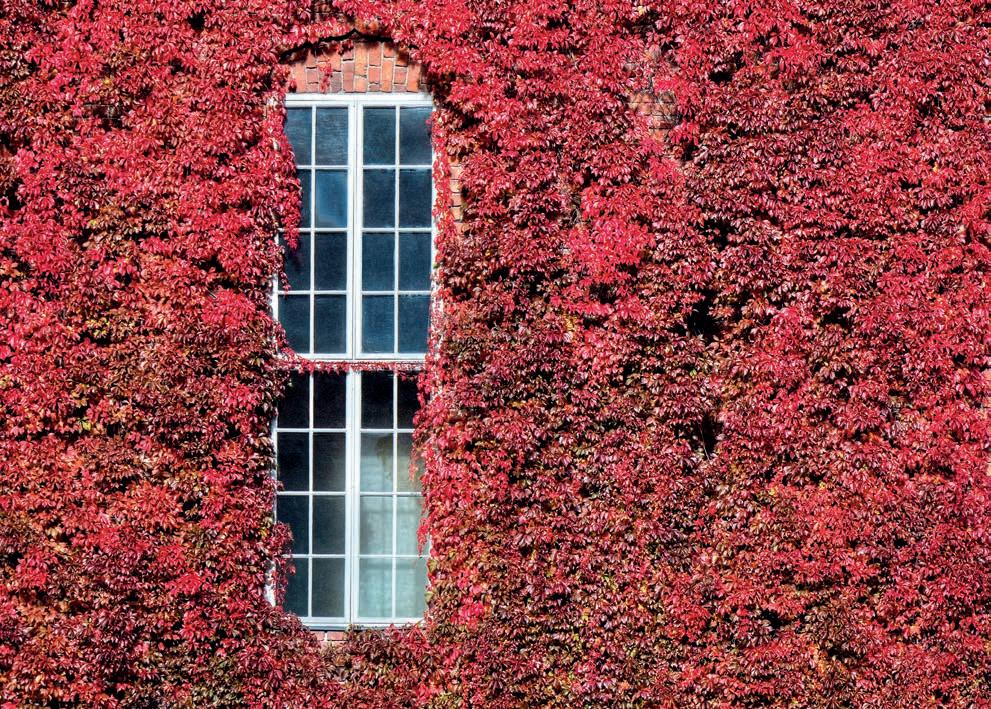
Acers are hard to beat for glamorous autumn colour. Japanese maples such as A. palmatum ‘Sango – kaku’ (coral bark maple) and A. japonicum ‘Aconitifolium’ are reliably exciting even on a dull autumn day.
The Katsura (Cercidiphyllum japonicum) does get tall – around 20m - but if you have space, the pinkish yellow leaves in the autumn also give off a delicious burnt caramel scent as they fall – walking through them sends up wafts of sweetness.
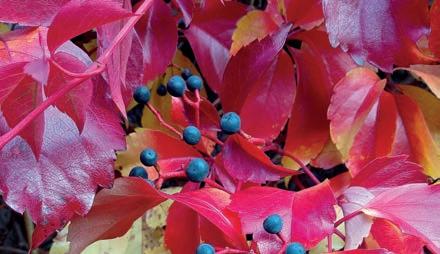
Above: Katsura (Cercidiphyllum japonicum).

Top and top right: Parthenocissus quinquefolia. Right: Acer or Japanese maple.
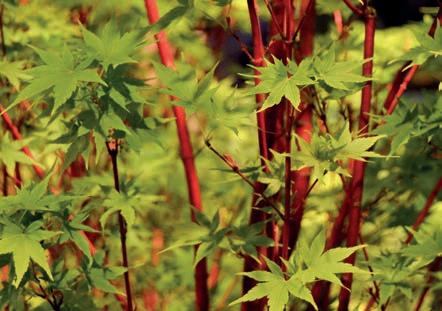
Above: Ornamental grasses. Right: Ginkgo biloba.
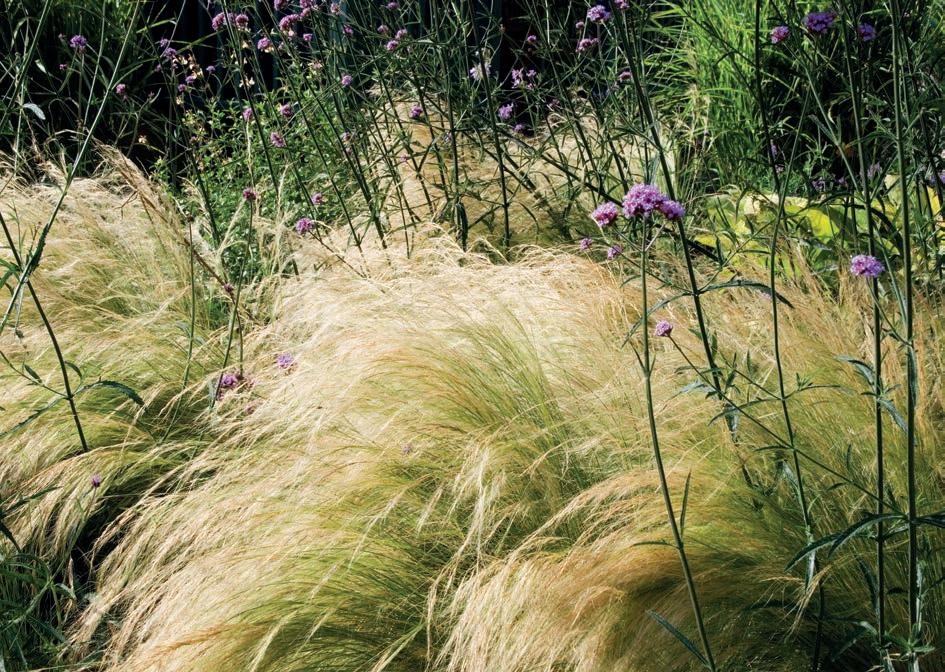
Bottom right: A Dahlia ‘Labyrinth’.
Another stunning tree when seen against a blue sky is the Ginkgo biloba. The pretty fan-shaped leaves turn rich lemon and gold in the autumn. By contrast, the fruit smell foul, but luckily these are seldom produced in the UK.
Several perennials and bulbs produce stunning colours right up to the first frosts – the best of these Dahlias, Salvias, Sedums (now Hylotelephiums) provide a range of vibrant colours.

Ceratostigma plumbaginoides combines attractive pale blue flowers with deep red foliage in autumn and Colchicum autumnale with their brightly coloured flowers which open wide before their leaves, when the sun shines in autumn. R











